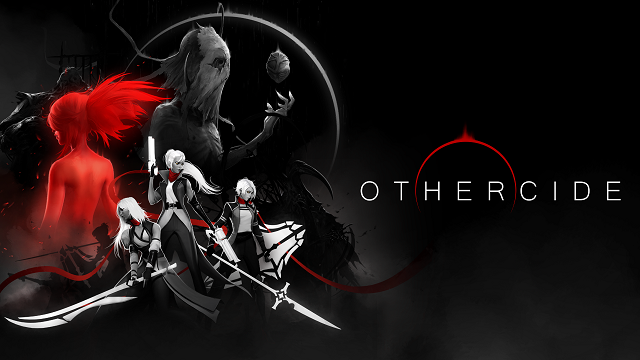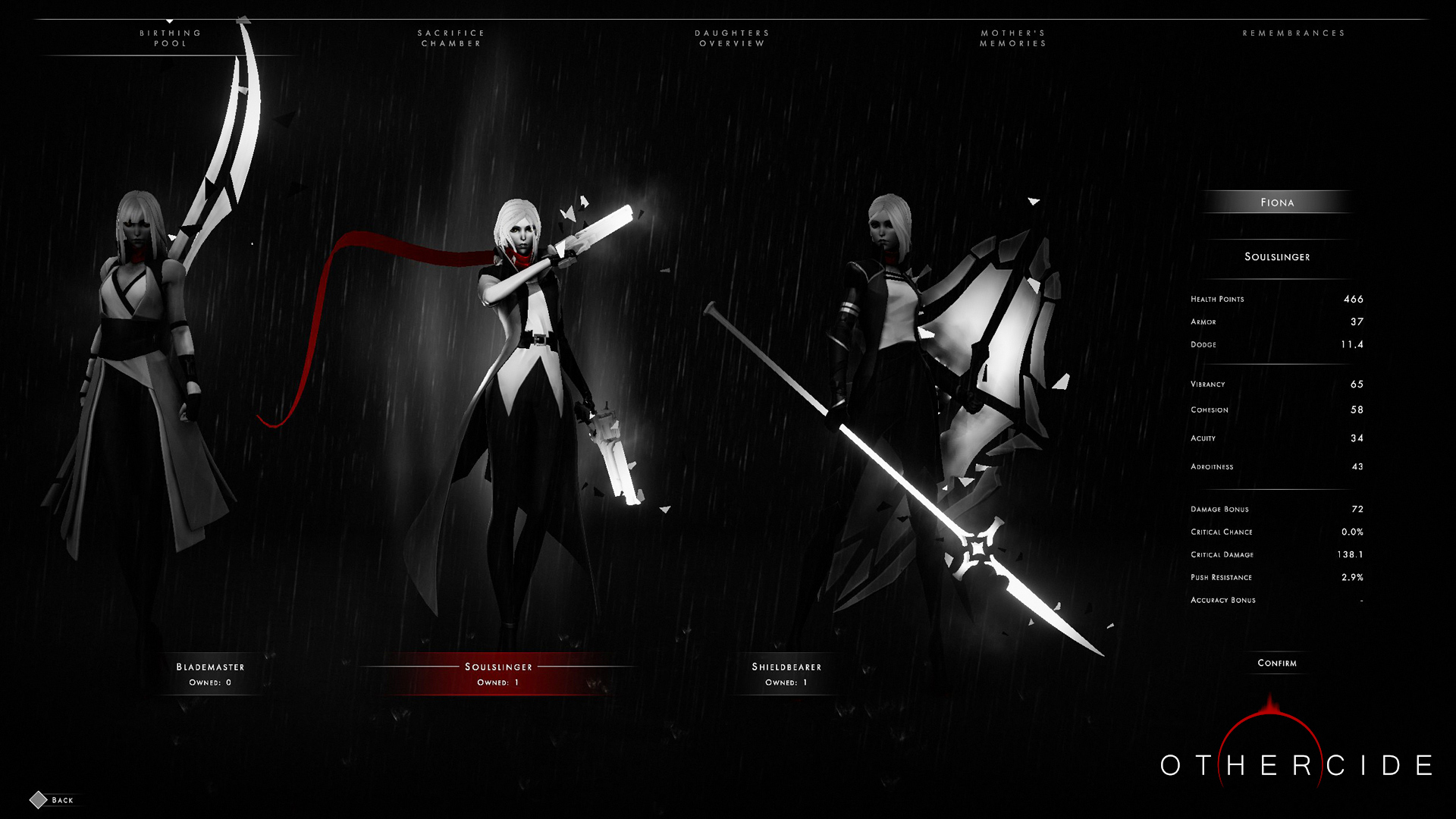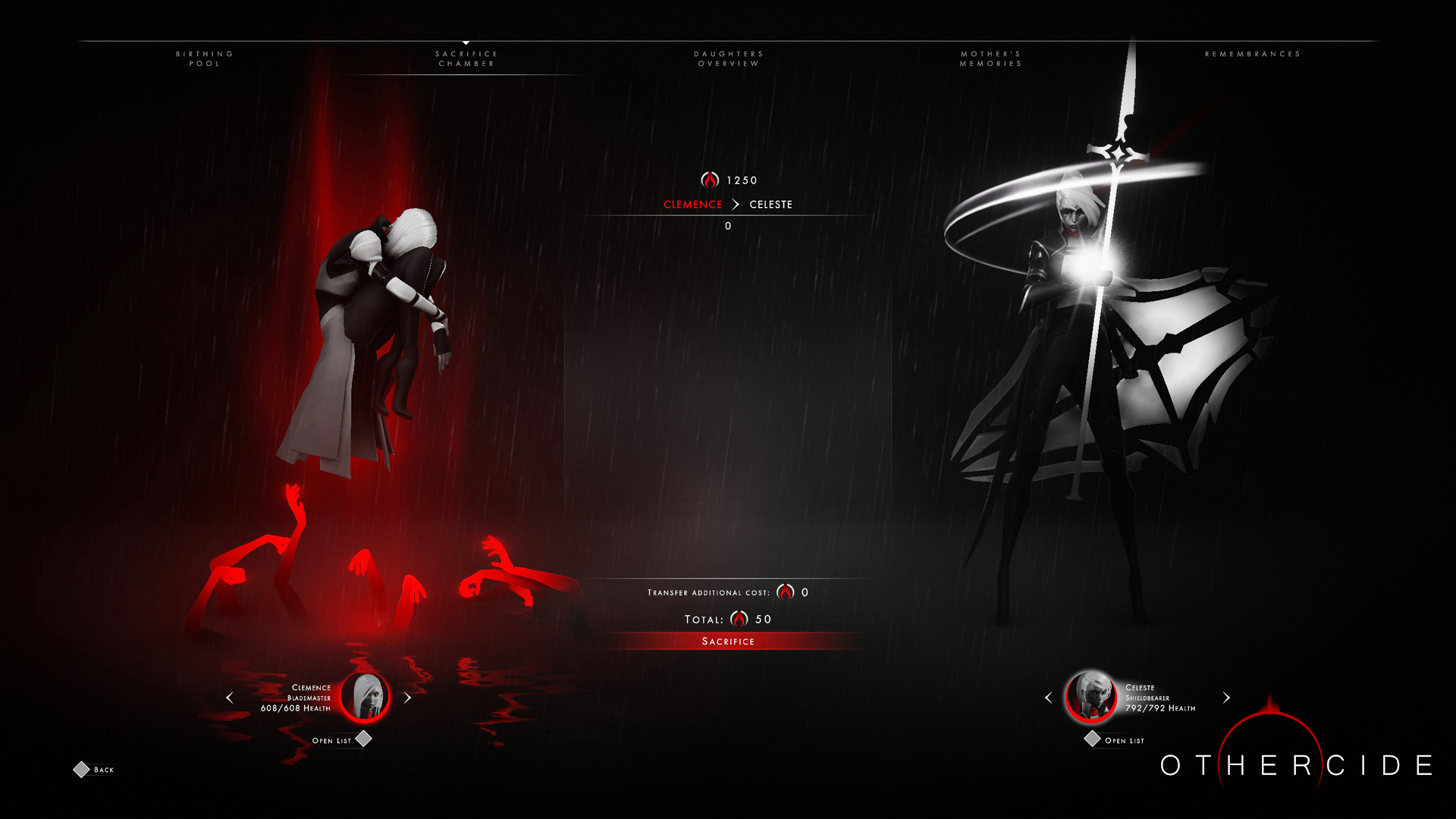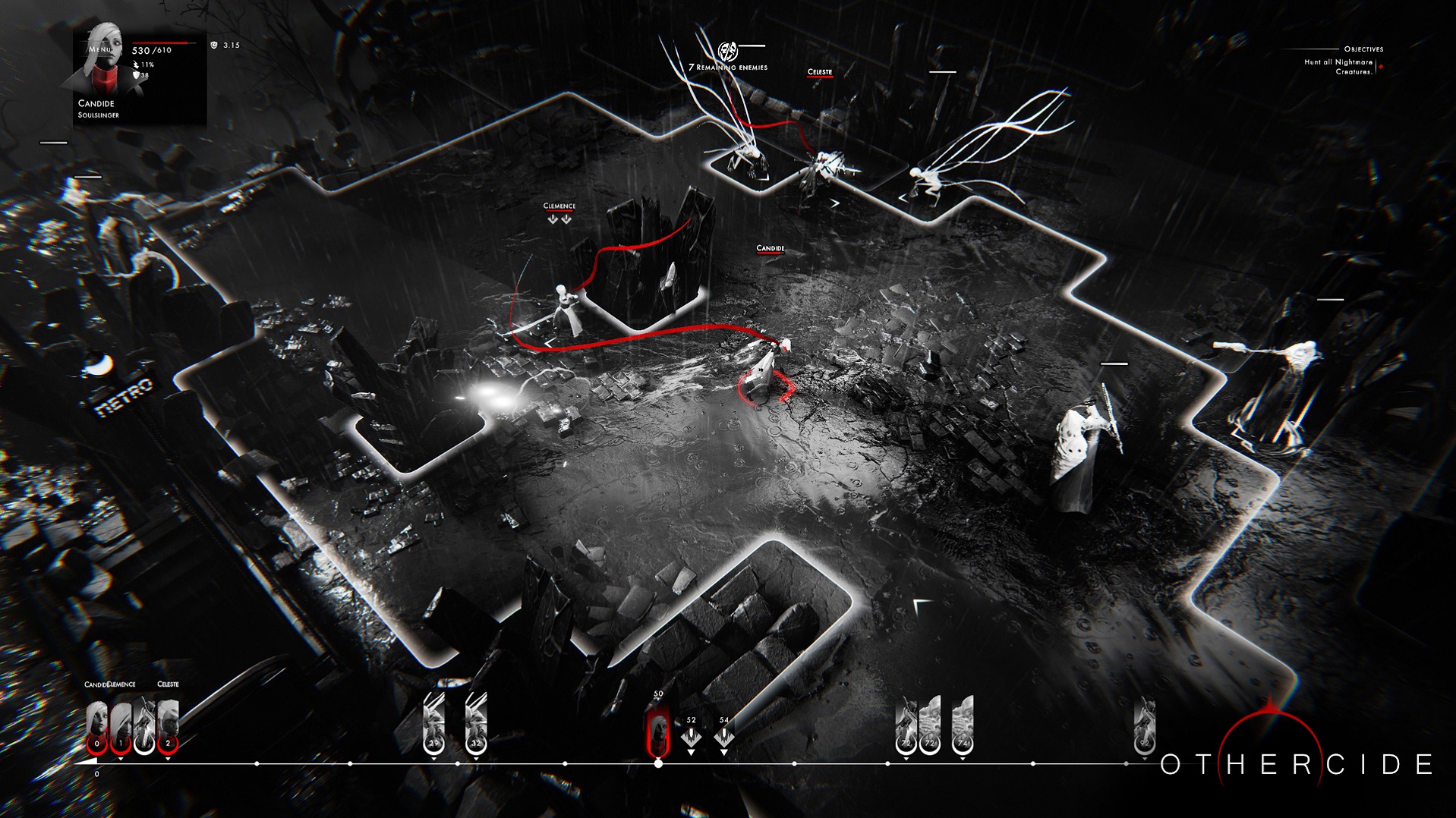Othercide is an incredibly stylish game. It leans heavily into its dark, gothic roots, implementing a slick graphics style and a lore-heavy storyline. On top of all that, it boasts a pretty impressive turn-based tactical system, rewarding well-executed plans and punishing ill-conceived schemes.
It makes a run at the kings of the genre like XCOM, but a few problematic design choices and a bit of a “style-over-substance” feel keep it from taking the throne. That said, there is certainly a place for Othercide at the table, and its unique qualities could open doors if the franchise continues moving forward with sequels or offshoots.
Othercide Review: Grimdark Tactics
It can’t be overstated how much Othercide swings for the fences with its presentation.
Instead of soldiers (or some other tired trope), you control a team of women called “daughters.” Each has a dancer’s flair fighting style, and each features names such as Joy, Temperance, or Mercy. Daughters are brought into the world with Vitae (a type of currency), emerging from a pool of fluid as a giant heart named “Mother” beats in the background.
Everything is black and white and shades of grey, except for splashes of red for blood or clothing accents.
You battle ghastly creatures across a variety of decimated, ruined cityscapes, and as you progress further into the game, you’ll start to unlock hints about what has happened to the world and what your ultimate goal is. You’ll also unlock new traits, abilities and fighting styles for your army of daughters, giving you a leg up as you encounter bigger and nastier foes.
On the surface, Othercide plays like other turn-based tactics games, such as XCOM or Battletech. There are a few key differences that keep things interesting, however.
For one, there is a lot more melee combat in Othercide. Of the three starting classes available to each daughter, two of them are entirely focused on melee. You’ll unlock more classes as you make your way through the game, but a majority of combat is in close-quarters.
It’s a significant wrinkle to the typical formula because you’ll have to constantly think about the damage your daughters take — in each encounter and throughout your campaign. The only way to heal a daughter between missions is by sacrificing another daughter of the same level. And ranged characters won’t change that because diversifying your forces is important to winning missions.
Another wrinkle in the game’s strategic layer comes by way of your class-based triggered abilities, which you can use at the end of your turn to set up “if-this, then-that” options.
For example, some abilities trigger attacks if an enemy ends their turn in melee range, while others may trigger bonus attacks if another daughter deals damage to an enemy. These can trigger multiple times per turn, so you’ll want to set them up in advance to get multiple activations in a single turn.
However, since these abilities also cost a percentage of your precious HP, there’s a ton of risk and reward involved with combat. Sacrificing daughters to heal others is an extremely tough choice to make, and it will have you overthinking every move you make during a mission to avoid taking any unnecessary hits.
A Thousand Cuts
When you hit the end of the line in Othercide, you will get the chance to restart your playthrough and use currency to unlock certain bonuses. These might grant bonus hit points or strength to your daughters, or resurrect a daughter from a previous run at the start of your current one. These bonuses are necessary when you start hitting the later missions, and they also take the sting out of dying as you figure out foes and Othercide‘s systems.
And die you will.
Othercide is unapologetically difficult (mission difficulty starts at “Hard,” moving to levels like “Challenging” and “Impossible”) and new enemies will often shred you with abilities that you won’t see coming. A large, lumbering foe might leap across the battlefield with surprising agility, and the first boss you meet has some nasty abilities that can seem insurmountable if you come in with the wrong team of daughters.
This difficulty also introduces some of the roguelike elements of Othercide. As your daughters achieve certain outcomes in battle, they’ll gain access to memories. Every ability can have a memory attached to it, providing bonuses to damage and critical hit percentage, for example. If a daughter is killed, all of her memories go with her, so gameplay again falls into a high-risk, high-reward see-saw.
You can also “win” a mission but ultimately have a negative outcome, essentially dooming your team. If you lose multiple strong characters on a mission you still successfully complete, you might have reached the end of your run. There is no save-scumming allowed in Othercide: everything is automatically on Ironman Mode.
Here, remembrances play a role. As you make your way through a run, you’ll accumulate shards, which can be spent on powerful bonuses for the start of your next run. You might be able to boost all of your daughters’ HP or gain a resurrection token so you can start the next run by bringing back a particularly powerful daughter. The remembrance system encourages you to get as far as you can in a particular run so you can start your next one even stronger.
Style Over Substance
There is a lot to like in Othercide, but there are a few places the game stumbles: style and worldbuilding.
Othercide‘s graphics look great in stills and screenshots, and the world itself is interesting to look at, but the monochromatic palette makes it tough to survey a battlefield at a glance. Everything kind of blends together, and it’s tough to tell which character is which when trying to plan a strategy.
This bleeds over into other aspects, too, where certain components of Othercide aren’t introduced in a way that you learn about them before using them. Because of how some classes, abilities, items, and currencies are depicted in the game, you won’t always know what they do ahead of time.
Finally, the menu system is obtuse at best, and it can be hard to find what new unlocks are at your disposal and where they are. Do you equip memories in the birthing pod? What about remembrances? Do I sacrifice this bright soul so I can resurrect my soulslinger? There is a lot of intuitive stuff here that could make someone bounce off if they aren’t ready to dive into this gothic world.
Othercide Review — The Bottom Line
Pros:
- All-in tone and style
- Difficult tactical combat with lots of decisions
- Slick graphics that draw you in
- Rewards for learning systems and planning ahead
Cons:
- Menu system could use some work
- Difficult to the point of being unfair on occasion
- Can be tough to assess tactics at a glance
If you want a tough take on turn-based tactics, Othercide is a great pick-up. If you’ve tried the genre before and bounced off because of the gameplay, it isn’t going to change your mind.
That said, Othercide offers up some unique and tough decisions (mostly in the progression aspect of things), and a slick presentation keeps you dialed in. It might not become your new all-time favorite, but Othercide is a strong addition to the genre.
[A copy of Othercide was provided by Focus Home Interactive for the purpose of this review.]












Published: Jul 27, 2020 05:04 pm